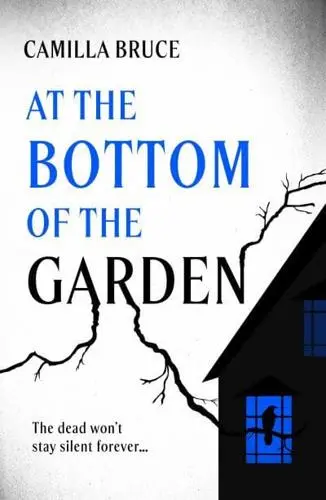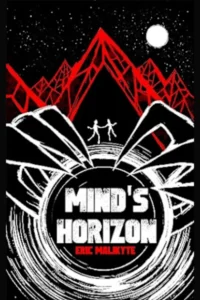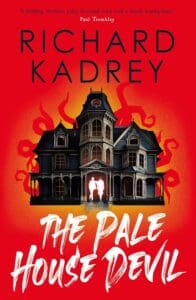
Synopsis:
Clara Woods is a killer—and perfectly fine with it, too. So what if she takes a couple of lives to make her own a little bit better? At the bottom of her garden is a flower bed, long overgrown, where her late husband rests in peace—or so she’s always thought.
Then the girls arrive.
Lily and Violet are her nieces, recently orphaned after their affluent parents died on an ill-fated anniversary trip. In accordance with their parents’ will, the sisters are to go to their closest relative—who happens to be Clara. Despite having no interest in children, Clara agrees to take them, hoping to get her hands on some of the girls’ assets—not only to bolster her dwindling fortune but also to establish what she hopes will be her legacy: a line of diamond jewelry.
There’s only one problem. Violet can see the dead man at the bottom of the garden. She can see all of Clara’s ghosts . . . and call them back into existence. Soon Clara is plagued by her victims and at war with the gifted girls in her care. Lily and Violet have become a liability—and they know far more than they should.
Review:
For fans of Grady Hendrix’s charming “Witchcraft for Wayward Girls,” but also Lemony Snicket’s funereal “A Series of Unfortunate Events,” “At The Bottom of The Garden,” by Camilla Bruce is a novel packed with gothic goodness, ghosts galore and sweet, sweet revenge. Mischievous, spell-binding and lethal in its strange allure, this is a book that winks at you as you’re reading, a book that is written from beginning to end with a sly, knowing grin. It had me smiling and frowning, and raising and furrowing my eyebrows to the point where any onlookers may have assumed I was having a medical emergency. Out on January 28th (along with a disproportionate amount of other wonderful horror books) from Oneworld Publications in the UK (thank you for the ARC) and Del Rey in the US, I can’t see why you WOULDN’T pick this one up.
We follow Lily and Violet, who following their parent’s tragic deaths in the mountains, are orphaned, and thrust into the dubious care of their estranged Aunt. Yes, luckily, their Aunt Clara is willing to take the both of them in (and conveniently, their big fat fortune). Having lived comfortably with their parents, adjusting to Clara’s home is bound to take some time, thus she forbids them from returning to their old house, or visiting the school whilst they’re still grieving. Tensions rise rapidly between Clara and her nieces, but squabbles about music teachers and friends back home are soon dwarfed by something much much bigger. It seems that the girls aren’t the only ones living with Clara, and her housekeeper Dina, there’s a man at the bottom of the garden.
Reading from the first person perspective of Clara was easily my favourite part of this book. Whilst not quite so nonchalant in her approach to first degree murder as Victorian Psycho’s “Winifred Notty,” which I reviewed last week, she is undeniably a piece of work. Really quite thrilled that her brother and his wife have shuffled off of this mortal coil and met their makers, leaving their assets up for grabs, Clara is selfish, social-climbing and standoffish with pretty much everyone, unless for her own benefit. When she realises that Violet and Lily are not docile cash cows, or means to fund her jewellery business, and in fact, they’re not the only unwelcome guests in her home… I believe the term is schadenfreude. Perhaps my only (small) complaint was that we spent ⅔ of the book reading from perspectives that, in comparison, interested me less.
“Next to diamonds, I am fairly certain that a woman’s best friend is a well-honed ax.”
That’s not to say that Lily and Violet are mere wallflowers in Bruce’s gothic garden, quite the opposite. Their newfound powers, Lily’s Daniel Torrance-like ability to sense emotions, and Violet’s knack for seeing and communicating with ghosts, demonstrate the effects of grief on the young mind, as well as demonstrating that there is a great deal more to someone than we initially think. We should invest our time and energy into getting to know the people in our lives, lest they summon a malicious spirit who is out for revenge against us. Speaking of, the supernatural elements themselves are superbly executed, and there in the first place referring to themes of secrecy and generational trauma- they’re richly and beautifully executed- far from paranormal party tricks.
“At The Bottom of The Garden,” by Camilla Bruce is satisfying in its resolution, rich and gothic in atmosphere and whimsical in nature… it delivers on multiple fronts. This one is a ghost story that chills, a revenge tale that bites, and a deeply resonant meditation on death, generational trauma, and the inevitable reckoning of karma. As haunting as it is thought-provoking, if you like your fairy tales twisted and your justice served cold, this one was written for you.











Leave a Reply